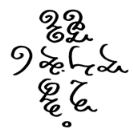
Display
Members-
Posts
19 -
Joined
-
Last visited
About Display

Profile Information
-
Biography
study these and more Adrian Willaert, Alexander Arkhangelsky, Becky McGlade, Cesar Franck, Costanzo Porta, Cristóbal de Morales, Christopher Tye, Dmitri Bortniansky, GF Handel, Giovanni Pierluigi da Palestrina, Girolamo Frescobaldi, Guillaume Dufay, Heinrich Isaac, Heinrich Schutz, Henry Purcell, Hieronymus Praetorius, Jacob Obrecht, Jacobus Clemens non Papa, James MacMillan, Jan Dismas Zelenka, Jean Mouton, Jehan L'Heritier, Johann Sebastian Bach, Johannes Ockeghem, Joseph Haydn, Josif Marinkovic, Josquin, Orlandus Lassus, Pavel Chesnokov, Pérotin, Rudolf Escher, Sergei Taneyev, SL Weiss, Stevan Stojanovic, Tomás Luis de Victoria, William Byrd, Wolfgang Amadeus Mozart
-
Gender
Male
Recent Profile Visitors
125 profile views
Display's Achievements
-
PeterthePapercomPoser started following Display
-
Display started following Thatguy v2.0
-
Display started following PeterthePapercomPoser
-
Display started following Canon a 3 in C-sharp minor "Domine, Quo Vadis?" , Jeu, Piano & baryton. , Complainte sur certains ennuis and 3 others
-
incredible! it sounds a lot like early 20th century music, meaning in the best way! but what is a "feminine rhyme" ending? does that mean it ends on an unaccented part of a measure?
-
I'm loving your voice and singing! It does feel sad, like someone is sighing? but I don't understand your text I have to admit it goes over me... is it a love song? also the way you produced it is incredible!
-
Hey man did you listen to it or? I mean not that I would be wanting to twist your arm to do it, but I never saw anyone listen to it on You tube, but you correctly said the imitation is canonic... I'm jw I don't have any notation software, I did have musescore at some point, but the fact that u have to input rests until the voice enters really "bothers" me... I don't understand how to use it I guess... also the playback was horrendous for some reason I could not get a decent playback of anything... I can offer syllable distribution for any of the lines, but this isn't fixed... I mean no one is singing this music to begin with so I'm not that sure why would you need these things? these are all short forms, I have more uploaded on YT details that may be of interest to you: the double counterpoint is all ottava and some alla decima there's about 5 or 6 voices I think partsong is divided into 4 "sections" there is at least one line shared/repeated between 3 "sections", each "section" has at least one line which is used in other two sections, if that makes sense? one "section" (canone all ottava) isn't "fugal" in that sense, it's improvised so I can tie back to the main expositions... ("main" line is exposed 3 times one motif from it is used to form 2 other expositions (alla decima) the opening exposition is "main" line augmented (and very tiny adjustments in tone progression) contra 2 other subjects which are never used again... which may be why you heard it like a canonic imitation, and you're totally correct btw) I guess you would call this fuga the final would be A# I don't know if it would be serving any purpose to write music to staff? I can give you midi files here btw no problem... I'm kind of unsure what to share here btw, I don't even necessarily claim this is the best one, but it represents my interests well, I did hear one carol you harmonized and write out so I would maybe suggest clicking on "Boze vo imja" on that YT page, if you're curious, the setting would be much more ...like "familiar" to you I think Thanks for taking interest! And sorry for lack of visuals...
-
ah, I didn't know this about tonal style! thank you again, excellent reminder!
-
sweet, I think I've read this but I totally forgot! so basically, as long the suspension is good (in terms of what is good in 2 voice textures) against a 3rd voice, 7>8 is not controversial at all? haha this is kind warping my brain but i think i'm beginning to see the logic... it's actually perfectly consistent to the examples I have, idk why the rule from the other textbook stuck with me so much... PS i found the page u shared, thanks!
-
I was replying to you too quickly > I don't have much time to look up every example, to try and find the source work... I do not have the source works as text because that would be just too much information to store in any sort of helpful manner... names of composers of the works I already gave you... I can post examples as midi, I may be able to tell you more names of source works over the coming few days... if you're suspicious of me, which I only offer because of my previous experiences on the forum, nothing to do with you, I would encourage you in persisting, for my sake... but for yours to reconsider: why would I try to invent something like this and what motive would it serve? all the best! PS another thing that "masks" the ligature well is that, as you can see, it forms a cambiata where "return or recovery is larger than a 2 (secunda) or absent" which is used by this particular composer very often (but a fair number of others as well) (here I'm just purely speaking "melodically", second tone of the cambiata figure is actually consonant with one voice but has a "genuine dissonant ""function"" of the cambiata figure's second tone" in relation to another...) as I said it's nearing a cadence so the relations get a bit less straightforward, as I'm sure you know is common... again, others are much more "plain" / easy to spot
-
I gave u a misleading numbering, the numbering I have on my pdf is so I can have as many examples in one file (reasons are related to DAW it's not relevant), so I count measures differently 🤦♂️ the relation is between outer voices, m 175-176 disregard my numbers u can just count from 173 sorry about that I was replying to you too quickly...
-
under what circumstances > i forgot to reply to this the example i gave by name: it's near a cadence, the values are more rapid at this point, it's figured out a bit "sneaky" (in a sense that maybe ears of someone not accustomed to the usual things might not even register it), but u can see the score yourself on choral wiki: cpdl dot org others are not so, they appear as regular (any other type of common) ligature, but I can't name them all from the top of my head also I only found like 6-8 of these...
-
bastardized version > haha that's funny! but I guess some of it is music "rules" changing/advancing, that's actually an interesting topic... (more and more I see "other side" of that thing, like some baroque period leap tendencies actually not being that "poor" or difficult vocally as theorists like Jeppesen would "have you believe") I don't recall anything from Jeppesen book (the counterpoint i don't have the one specializing in Palestrina) on this issue, if you find something I would love if you can remind us here... rules of counterpoint were not yet as developed > I don't know if i would agree with your statement in a strict/complete sense, but i understand your point here! the pre roman school guidelines being more relaxed from our view... this book i mentioned doesn't make any distinction between Flemish (Netherlandish, Burgundian w/e ppl call them) and Roman "periods" in terms of rules, that might be why i didn't clarify Jean Mouton may be the closest to our time? but even he is somewhere between these two... cheers for taking time and interest in solving the issue! all the best!
-
I like the solemnness you achieved here!
-
first one I can offer the work name of: "missa mi-mi" Johannes Ockeghem, Credo, m 171 this one is slightly less "problematic" but still applies, others are much more straightforward they include examples from Jean Mouton, Obrecht, Isaac... what is the reason behind your curiosity? (if any, like I suppose surely this isn't just chatting? 😮)
-
i read in a texbook by Sergei Taneyev that a ligature of 7-8 in a lower voice is prohibited in the old style of voice leading, but i found examples of it in works (very few though) did anyone here who reads old works find this ligature in practical use? i can list the findings I made but I think I can only remember exact partsong in one example do you know from study or maybe you were thought in a class, is this a prohibited ligature? 🤔 (obviously i can only recommend Sergei Taneyev textbook but it's not unimaginable that someone living in the time this master was living in didn't have a chance to get their hands on all the works we have the privilege of having access to today)
-
Bas je fino ovo! Vrlo moderno cuo sam nekoliko bas popularnih kompozitora danasnjih da se zanimaju za slicne harmonije! A jedno samo da predlozim, ako zelis da nesto bude u 8 glasova ili mnogo, a traje duze od kratkih liturgijskih odgovora na primer, bilo bi dobro da variras gustinu tokom trajanja: recimo ako pocinje iz mnogo? na pola svedi u jedan ili manje od 3 na primer... i obrnuto sto vise "razlicitih" faktora takvih izbalansiras bolje ce biti za uho (to nisam rekao ja to mozes naci u dobrom jednom udzbeniku) a to ti spominjem zato sto mi se cini da konstantno ima 6 vv posle uvoda... PS odlican prilaz najvisoj noti!
-
hi! any critique from arrangers and composers of vocal music would be welcomed! but even if you're not interested in this type of music critiques are welcomed! thanks for your time!

.thumb.png.8b5b433a341551e913a34392660bc95b.png)





